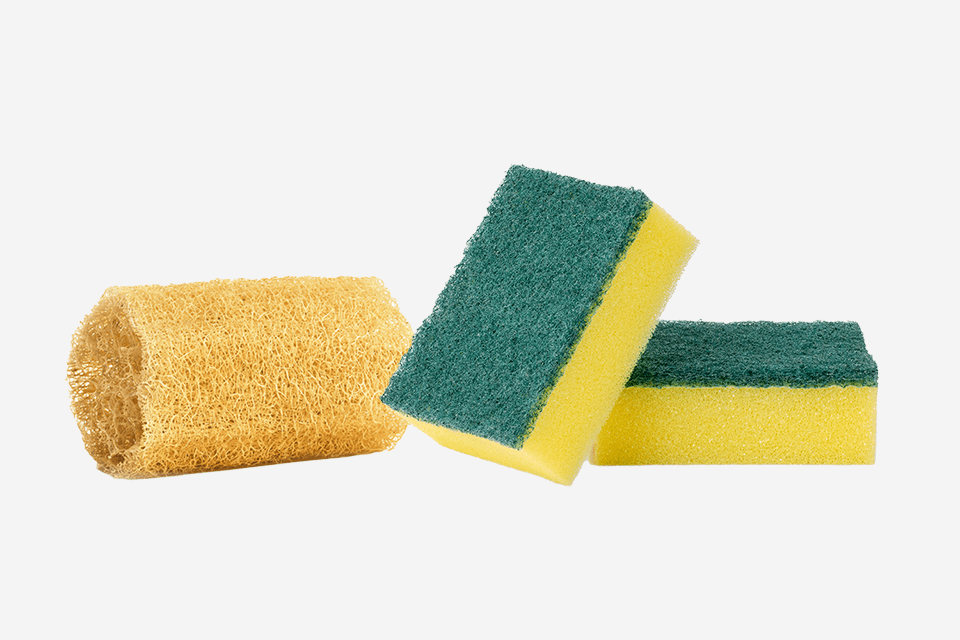Loofah Sponge Vs. Plastic Sponge: Why You Should Make The Switch!

Say goodbye to plastic sponges! Our guide reveals why loofah sponges are the eco-friendly option you need for a cleaner home and a healthier planet.
Estimated Read Time: 3 minutes
Sponges—whether for your kitchen or your shower—are a household staple. But have you ever stopped to think about what your sponge is made of? If you’re still using plastic sponges, it might be time for an upgrade. Enter the loofah sponge: a sustainable, biodegradable, and plastic-free alternative.
But let’s be real: if not cleaned properly, your loofah can go from a self-care dream to a bacteria-loving nightmare.In this guide, we’ll break down the key differences between loofah sponges and plastic sponges, why making the switch matters, and how you can do it effortlessly. Let’s dive in!
What Is a Loofah Sponge?
A loofah sponge is derived from the dried fibers of the luffa plant (yes, it’s a plant!). Once harvested, the plant’s interior forms a coarse, fibrous material that’s perfect for scrubbing, without the waste. Unlike synthetic sponges, loofahs are 100% compostable and free from plastic particles.
Loofahs have been used for centuries across different cultures as an exfoliating tool, proving that natural solutions often stand the test of time. The versatility of a loofah extends beyond just clean beauty; they’re also used for cleaning dishes and even as a natural scrubber for household surfaces.

The Ugly Truth About Plastic Sponges
Plastic sponges might be convenient, but they come with a hefty environmental price tag:
- Microplastic Pollution: Every time you use a plastic sponge, tiny plastic particles break off and wash down the drain, eventually making their way into our oceans and drinking water.
- Not Recyclable: Plastic sponges are made from petroleum-based materials and can’t be recycled, meaning they sit in landfills for centuries.
- Harmful Chemicals: Many plastic sponges contain triclosan, an antibacterial agent that can negatively impact aquatic ecosystems and even human health.
Loofah Sponges vs. Plastic Sponge: A Side-by-Side Comparison
| Feature | Loofah Sponge | Plastic Sponge |
|---|---|---|
| Material | Luffa plant fibers | Synthetic plastic |
| Biodegradable? | Yes, fully compostable | No, ends up in landfills |
| Microplastics? | None | Yes, and sheds into waterways |
| Longevity | 3-4 weeks | 1-2 weeks (before it starts to smell!) |
| Antibacterial? | Can harbor bacteria if not cleaned regularly | Absorbs bacteria quickly |
| End-of-life | Compost it! | Goes straight into the trash |
Our Verdict? switching to a natural loofah sponge is the obvious choice!
The Shocking Stats You Need to Know
Still need convincing? These stats might do the trick:
- An estimated 14 million tons of plastic enter the ocean every year, much of it from everyday household items like plastic sponges..
- Plastic sponges shed microplastics with every use, which have been found in 83% of global tap water samples.
- Loofah sponges are a zero-waste swap, breaking down in compost in just 30 days—plastic sponges, on the other hand, stick around for 500+ years.
- Over 50% of marine species have been impacted by plastic pollution, including ingestion of microplastics from common household items.

How To Make The Switch
Swapping your plastic sponge for a natural loofah sponge is easy! Here’s how:
- Care for Your Loofah: Rinse after each use, let it dry completely, and replace every 3-4 weeks. You can check out our care guide here.
- Compost When Done: Unlike plastic sponges, loofahs can be tossed in your compost bin when they’re worn out.
- Use Them Beyond the Shower: Loofahs are great for washing dishes, scrubbing vegetables, and even exfoliating dry skin.
- Spread the Word: Got friends still using plastic sponges? Share your zero-waste knowledge with them!


Comments (0)